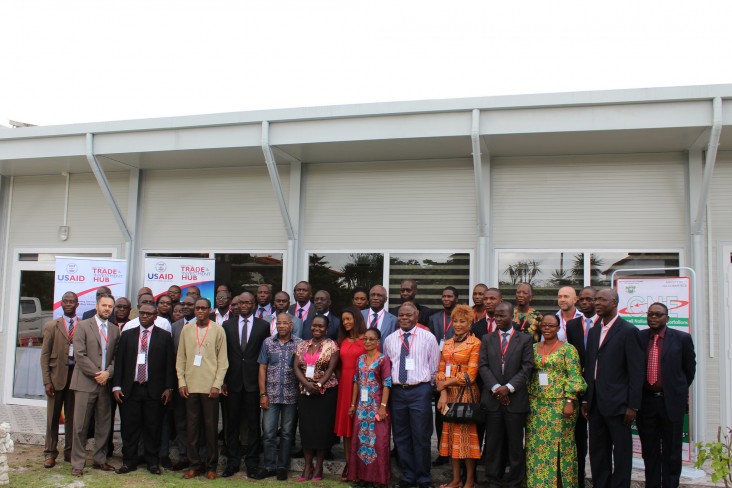
For Immediate Release
More than 80 public and private stakeholders in Côte d’Ivoire’s apparel industry gathered for an indepth discussion to support the development of the country’s AGOA national strategy. The October 18-19 workshop, organized by the USAID Trade Hub, the Ministry of Trade, and the African Development Bank (AfDB), explained how the Ivorian apparel industry can reap the benefits of the preferential tariffs offered under the U.S. African Growth and Opportunity Act (AGOA).
It was the first of three workshops designed to gather input for development of a robust AGOA National Strategy for Côte d’Ivoire. African-made apparel garners some of the biggest duty-free breaks under AGOA, helping to make its industry competitive with apparel exporters from Asia. Workshop participants noted the many steps Ivorian apparel needs to take to get to the export stage, including WRAP certification, training workers, investing in equipment, and better knowledge of the U.S. market. “The opportunities exist. But we still have a long way to go from the tailor to the production chain,” said Gerard Amangoua, Deputy Director General of APEX-CI, the country’s leading exportpromotion agency. Trade Hub Apparel Specialist Emmanuel Odonkor presented a comparative study of AGOA strategies for sub-Saharan African apparel exports from Ethiopia, Lesotho and Rwanda. Government support is vital, he said, for factories producing the large volumes that U.S. buyers demand. “Through the President’s Special Initiative, Ghana has the biggest apparel factory in West Africa [Dignity/DTRT (Do The Right Thing) Apparel, a Ghanaian-American joint venture] exporting more than 1.3 million apparel units in 2015,” he said. “The government must reinforce technical expertise, support technical training, water and electricity costs, and implement U.S. social and environmental standards.” At breakout sessions, participants detailed constraints and priorities. Tano Frederic, Sales Manager at apparel manufacturer O’sey, said: "What countries like Ethiopia and Ghana have understood is that competitiveness is obtained by minimizing production costs. To satisfy the U.S. demand for 5,000 apparel units per day, you need to have quality suppliers and good equipment. However, the equipment we are using is secondhand and energy-intensive.” He added, “Our innovation is to work with designers and engineers who will help us to improve our sector. We also hope for an innovation fund and policies that will help our businesses develop to take advantage of the lower tariffs offered under AGOA.” The next two workshops will focus on agribusiness and handicrafts.







Comment
Make a general inquiry or suggest an improvement.